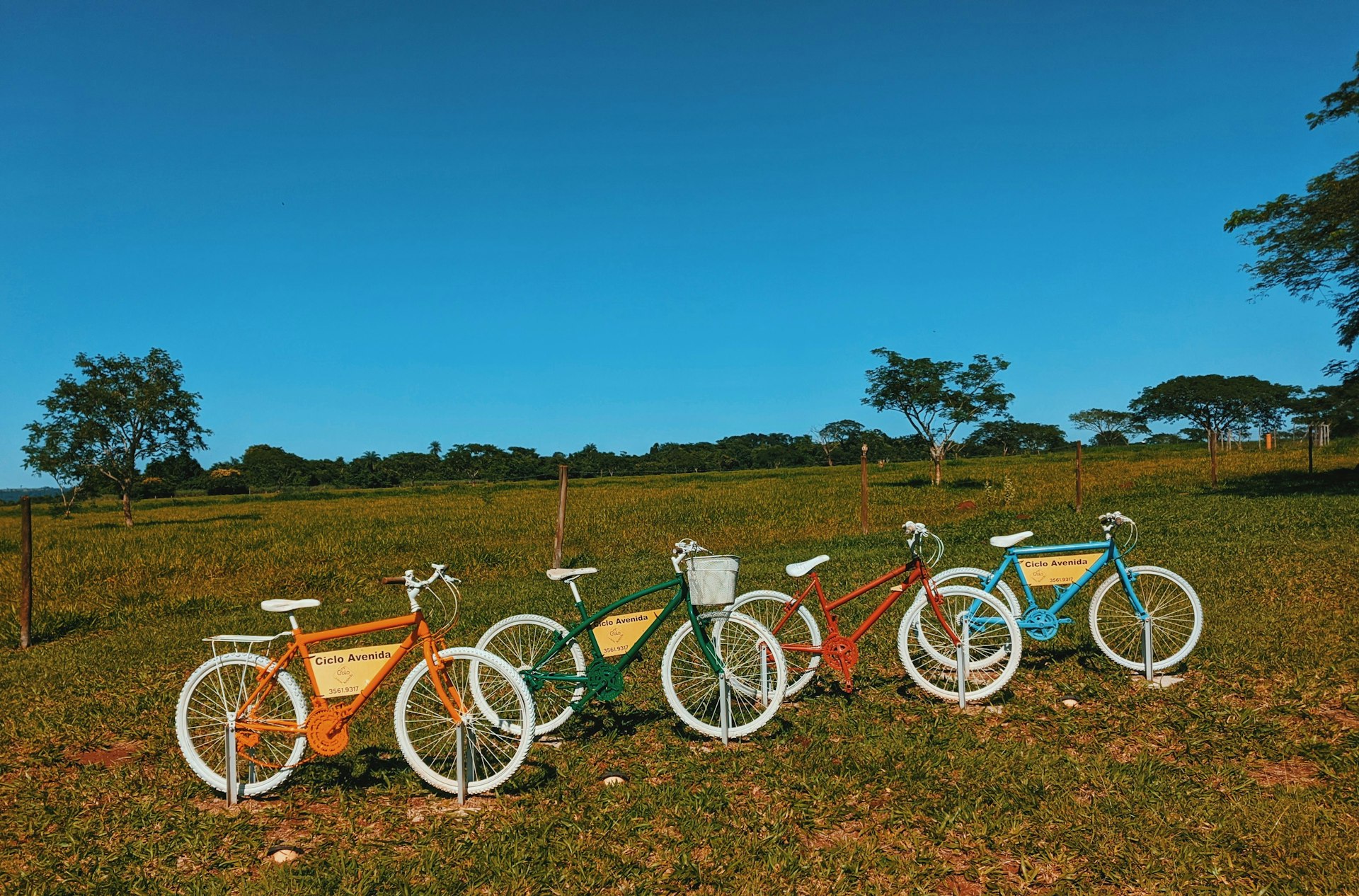Transform Your Everyday: Practical Circular Economy Lifestyle Choices for a Sustainable Future


Photo by Ricardo Vergilio on Unsplash
Understanding the Circular Economy in Everyday Life
The circular economy is a modern, regenerative system that aims to minimize waste and maximize the value of resources by keeping products and materials in use for as long as possible. Unlike the traditional linear model of ‘take, make, dispose,’ the circular economy focuses on closing the loop through reducing, reusing, repairing, and recycling. Embracing circular economy lifestyle choices means making conscious, daily decisions that benefit both the environment and personal well-being. These choices are not only about environmental stewardship-they also foster resilience, save money, and enrich communities for generations to come [1] .
Key Circular Economy Lifestyle Choices
Reduce: Mindful Consumption
At the heart of the circular economy is the principle of reduction. Before making a purchase, ask yourself if you truly need the item. Could you borrow, rent, or do without? Mindful consumption means pausing before buying, resisting unnecessary upgrades, and avoiding impulse purchases. This simple mental shift significantly decreases waste and conserves resources. For example, choosing to repair an appliance rather than replacing it can extend its life and prevent unnecessary landfill waste [1] .
To implement this, create a checklist before shopping, and consider alternative options like borrowing tools from neighbors or utilizing community libraries for books and media.
Reuse and Repurpose: Extending Product Life
Instead of discarding items, explore creative ways to reuse or repurpose them. Glass jars can become storage containers, old clothes can be transformed into cleaning cloths, and furniture can be upcycled for a new function. If you no longer need an item, consider donating, selling, or regifting it. Platforms such as Facebook Marketplace, eBay, and Freecycle offer opportunities for items to find new homes, further reducing the demand for new products [2] .
For practical application, set aside a section of your home for items to be reused or repurposed. Organize regular swaps with friends or community members, and explore local upcycling workshops for inspiration and skill-building.
Repair: Choosing Fix Over Replace
Learning basic repair skills is a cornerstone of the circular lifestyle. Simple mending techniques can give clothes, electronics, and household items a new lease on life. Many communities offer repair cafes or workshops where you can learn from volunteers or professionals. This approach not only saves money but also reduces the volume of waste entering landfills [1] .

Photo by Pineapple Supply Co. on Unsplash
If you are unsure where to start, search for local repair events or ask at your nearest community center. Many online tutorials and forums provide step-by-step guides for common repairs.
Recycle: Smart Sorting and Local Systems
Recycling remains an essential, though imperfect, component of the circular economy. Properly sorting materials according to your municipality’s guidelines ensures that recyclables are processed efficiently. Check with your local waste authority for a list of accepted items, as standards can vary widely. When in doubt, prioritize reducing and reusing over recycling [3] .
To improve your recycling habits, set up clearly labeled bins at home and educate household members about what belongs in each. Take advantage of community recycling drives for hard-to-recycle materials such as electronics and batteries.
Responsible Purchasing and the Sharing Economy
Buying Circular and Second-Hand
Supporting the circular economy also means making thoughtful purchasing decisions. Opt for durable, repairable products made from recycled or sustainably sourced materials. The second-hand market offers quality items at a fraction of the cost-clothing, furniture, and even electronics can be found in excellent condition. Platforms like Vinted, Depop, and local thrift stores provide access to a wide range of pre-loved goods [2] .
If you’re new to second-hand shopping, start by browsing nearby thrift stores or reputable online marketplaces. Always check seller ratings and item conditions before purchasing. Many manufacturers also now offer refurbished goods-look for certified programs on brand websites for added peace of mind.
Supporting Sharing, Renting, and Product-as-a-Service Models
The sharing economy enables access to goods and services without the need for ownership. Renting tools, appliances, or vehicles as needed reduces resource consumption and saves space at home. Car-sharing services, such as Zipcar and Turo, have gained popularity in urban areas, making it easier to access transportation on demand while decreasing the overall number of vehicles produced [4] . Some retailers now offer subscription models for products like clothing, electronics, or even toys, allowing for flexible access and return options.
To begin, search for local tool libraries, car-sharing programs, or community rental schemes. Check for official company websites or established peer-to-peer platforms. If renting isn’t available in your area, consider forming sharing arrangements with neighbors or coworkers.
Regeneration and Local Engagement
Grow and Regenerate
Regeneration is an advanced pillar of the circular economy. It involves replenishing natural systems by growing your own food, composting organic waste, or supporting local agriculture. Community Supported Agriculture (CSA) programs connect you directly with local farmers, reducing supply chain impacts and ensuring fresher produce [2] . Home gardening, even on a small balcony, can provide herbs and vegetables while closing the loop on organic waste through composting.
To participate, research local CSA programs by searching “Community Supported Agriculture near me” or check with your farmer’s market. For home composting, many municipalities offer bins or guidance-contact your local waste authority for details.
Mobility: Moving Circular
Transportation choices have a significant impact on your circular lifestyle. Walking, cycling, and using public transportation reduce emissions and resource use. Carpooling and car-sharing further reduce the need for personal vehicle ownership, which is especially impactful given that most privately owned cars sit unused for the majority of the time [2] . Choosing to travel less frequently or vacation closer to home also lowers your environmental footprint.
If you’re interested in sharing transportation, search for local carpool groups or established car-sharing companies. For public transit, visit your city’s official transportation website for route and schedule information.
Overcoming Challenges and Finding Support
Adopting a circular economy lifestyle may present challenges, such as limited access to repair services, higher upfront costs for durable goods, or unfamiliarity with second-hand markets. To address these obstacles:
- Seek out community repair events and online tutorials for basic fixes.
- Compare total cost of ownership when considering durable versus disposable products.
- Join social media groups focused on sharing or swapping goods.
- Advocate for local government or business initiatives that support circular practices.
Persistence and community engagement are key. Over time, these small, consistent actions can have a significant collective impact.
Step-by-Step Guide to Getting Started
- Assess your current habits. Identify areas where you can reduce, reuse, repair, or recycle more effectively.
- Set realistic goals, such as buying only second-hand clothing for three months or repairing one household item per month.
- Connect with local resources: join a tool library, sign up for a CSA, or participate in a community swap event.
- Educate yourself and others. Share your progress and experiences to inspire friends and family.
- Regularly review and refine your practices as you discover new opportunities.
Key Takeaways
Embracing circular economy lifestyle choices is an ongoing journey. By reducing consumption, extending product life, supporting the sharing economy, and regenerating local systems, individuals can make a measurable difference. These actions foster a resilient, sustainable community and pave the way for a healthier planet. For every step, there are accessible resources and support networks-whether through official municipal programs, reputable online marketplaces, or local community groups.
References
- [1] Sustainability Directory (2025). Circular Lifestyle Choices: Term and Practical Steps.
- [2] Circular&Co. (2024). Ideas for a more Circular Lifestyle.
- [3] Oney (2023). Daily Habits That Contribute to the Circular Economy.
- [4] eAsset Solutions (2025). Best 7 Circular Economy Examples.
- [5] Avvale (2023). Circular Economy: Seven Examples from Fashion to Automotive.






